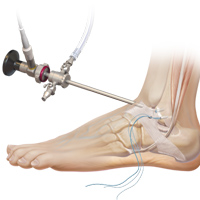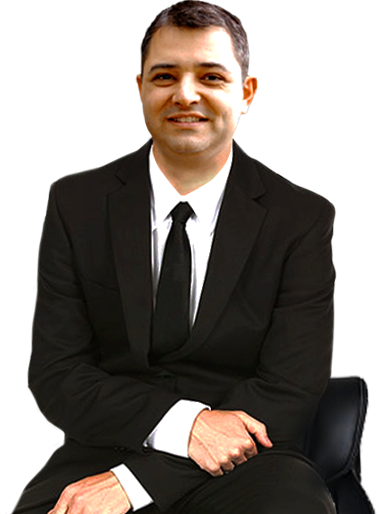Arthroscopic Ankle Surgery
The ankle joint can be affected by several conditions which may require investigation or treatment with ankle arthroscopy. A common cause of ankle pain is excessive scarring or synovial proliferation in the ankle joint after an injury. Ankle arthroscopy is a minimally invasive way to address these problems. In addition, ankle arthroscopy can be used to debride or remove injured cartilage such as osteochondral lesions, loose bodies, to shave intra-articular osteophytes (spurs) and as an adjunct to other procedures, such as ankle stabilisation or arthrodesis (fusion).
The Surgery

You will need to have a general anaesthetic and local anaesthetic. Antibiotics are administered intra-venously. We mark the subcutaneous sensory nerves with a skin marker in order to avoid injuring them. The ankle joint is examined thoroughly with a small camera (arthroscopy) through two ‘keyhole’ incisions at the front of the ankle. I am looking for cartilage damage and inflammed synovial tissue (synovitis) or scarring, or bone spurs that can be removed through these keyholes using a small burr. Pictures of the procedure are saved or printed. The skin is carefully closed and a bandage is applied.
Post-Operatively
You should have your foot elevated on 1-2 pillows to reduce swelling. The local anaesthetic will provide you with pain relief (and may make your foot or toes temporarily numb), but you may need to take medication as well. You will generally be able to go home on the same day and you will be safe to ambulate as soon as you feel comfortable. You should minimise walking until the wounds are healed (10-14 days). You may need to take medications for pain relief. You may need to have physiotherapy depending on the findings. Below is an estimate of your recovery, it will depend on your diagnosis.
- Activity
- Timeframe (approximate)
- Walking with CAM boot
- 0-2wks
- Physiotherapy
- 2 - 6wks
- Full Recovery
- 3 mts
- Type of Activity
- Time-frame
- Walking
- Walking Immediately
- Driving (right ankle)
- 2 weeks
- Running
- 6 weeks
- Sport
- 8 weeks
Risks of surgery
All surgical procedures carry some risk. The risk of complications with ankle arthroscopy is low. Most patients benefit from surgery. A small number of patients do not improve or are made worse. You should weigh up the benefits with the risks prior to electing to have surgery.
This is a list of the most common problems which can occur:
- Stiffness – reduced range of movement of the ankle joint, this can rarely be severe due to scarring (arthrofibrosis)
- Swelling – is normal and improves with time, but can occasionally persist past 6 months
- Wound healing problems – increased if smoking, diabetes, poor circulation
- Nerve injury – resulting in numbness or pins and needles, occasionally pain
- Bleeding – usually just visible through the dressing, may need the bandage or dressing changed
- Infection – minimised with antibiotics, elevation, keeping the dressing clean and dry
- Pain – which may require strong medication (usually Paracetamol is adequate) These are quite rare complications, but they can and do happen:
- Arthrofibrosis – severe stiffness due to excessive scarring, also known as ‘frozen ankle’, this is very rare
- Complex regional pain syndrome (CRPS) – nerve pain syndrome, risk reduced with Vitamin C 500mg daily for 40 days
- DVT – clot in the deep veins of the leg (increased if smoking, contraceptive pill, hormone replacement or previous history)
- Anaesthetic complications – more likely if there are pre-existing medical disorders
You will need the Adobe Reader to view and print these documents.
![]()









